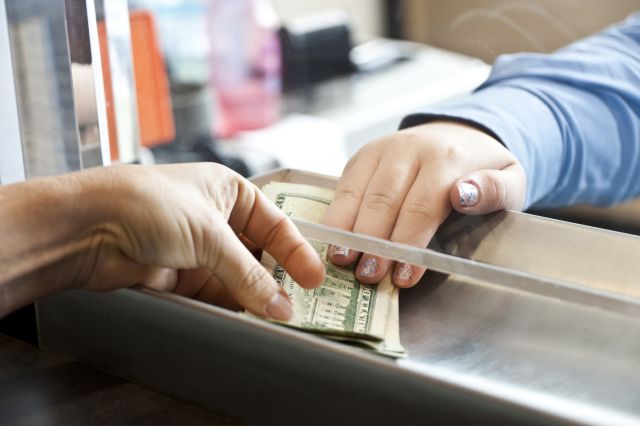Updated on March 6, 2025.
Who hasn’t dreamt of being filthy rich? You might be surprised, however, to learn how dirty your cash really is. Every time you hold a piece of money, even if it’s just to hand it to a cashier, you’re being exposed to germs.
Do you know where that dollar’s been?
In the United States, a $1 bill lasts about 5.8 years before it’s removed from circulation. Over time, hundreds of different people may touch that piece of currency. As a result, it can accumulate thousands of different germs. In one 2017 study published in PLOS One, researchers found 3,000 types of bacteria on 80 different bills, including bugs linked to acne, food poisoning, and staph infections.
Some kinds of money are germier than others. Bills may carry more germs than coins, for example. A 2020 study for the European Society of Clinical Microbiology and Infectious Diseases found that bacteria survive more on paper bills than they do on coins made of copper. The metal appears to have antimicrobial activity and provides an environment that’s unhospitable for most types of bacteria.
The type of material used to make bills can help determine their cleanliness. Bills in the U.S. are made of 25 percent linen and 75 percent cotton. A 2022 study published in International Journal of Environmental Research and Public Health found that cotton bills attract more bacteria than polymer-based bills, such as the British pound.
If you plan to swear off touching paper money, know that your ATM and credit cards may not be much more sanitary. A 2020 research study conducted by LendEDU reported that there were more bacteria on credit and debit cards than there are on dollar bills and coins. To derive their results, researchers used a device to test for bacteria and calculate a germ score. The higher the score, the dirtier the surface. Cards averaged a score of 285. In contrast, dollar bills averaged 160 and coins were usually around 136. For perspective, researchers noted that credit and debit cards carried more germs than a New York City subway pole.
The good news is that it’s unlikely that the germs on money will actually make you sick, assuming you’re otherwise healthy. There has, however, been research showing instances of food poisoning caused by bacteria on the surfaces of bank cards.
To help prevent illness, wash your hands after handling cash and regularly clean your cards with an antibacterial wipe. It's also wise to reduce the amount of contact your card has with other surfaces, such as card readers and your own hands. Using contactless cards and mobile wallets can help.
Most U.S. currency is contaminated with illegal drugs
A widely referenced study published in 1996 in the Journal of Analytical Toxicology was the first to discover the presence of illicit drugs on cash. Scientists found that 79 percent of U.S. dollars they tested were tainted with cocaine. Subsequent research has found that money can hold traces of other drugs, as well, such as MDMA, ketamine, and methamphetamine.
It’s unclear whether most contamination comes from drug use or from contaminated bills mingling with uncontaminated bills. One theory is that bills with larger amounts of cocaine have been used to consume cocaine or were exchanged in a drug deal.
It’s important to know: Having traces of an illegal drug on your money doesn’t mean you’ll test positive for that drug. Even if small amounts land on your hands, drugs like cocaine and opioids aren’t absorbed well through skin.
Soiled money is constantly being replaced
If you’re feeling revolted by what’s on your money, you’re not alone. The U.S. Federal Reserve is constantly replacing old money with new. One reason for removing cash from circulation is “soil content,” or the amount of bacteria that lives on each bill. In fact, more than 70 percent of the money printed in the U.S. is produced to replace old, unift bills. Still, it's wise to keep washing your hands.







